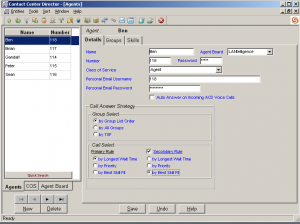One of the more interesting aspects of PBX system installation in general and ShoreTel in particular, is the subject of Legacy PBX integration. There are a variety of reasons that a new ShoreTel installation might need to integrate with the old, in place or “legacy” PBX phone system. You might be installing the ShoreTel at the first location of a multi-site installation with the rest of the sites coming on line as older equipment leases expire. PBX’s typically use a tandem tie-line to join systems together. The ShoreTel, in this instance, would know the dial plan of the other PBX extensions and know which users lived in which PBX. If a ShoreTel user dials and extension number or receives a call for an extension known to live across the tie-line, the call is sent to the other PBX. The tie-line is typically define as part of a trunk group that outlines a list of “off-premise extensions”. The ShoreTel can also provide digit translation and manipulation to accommodate over lapping dial plans.
Increasingly, as ShoreTel grows in popularity and increased market acceptance, it is being asked to be the Voice Mail system for the legacy PBX. If you think about it, legacy PBX systems have traditionally been installed with separate Voice Mail systems. As it relates to market share, large corporate clients often have OCTEL voice mail systems that are now coming up on ten years after service life! Perhaps the telephone system is not ready for replacement quite yet, but the VM is about to die under its own weight. The ShoreTel makes for a great solution! Install the ShoreTel as a voice mail system for the legacy PBX. Then, as the opportunity allows, let it grow up and strangle the PBX as its obvious replacement.
We have been involved in the integration of Nortel, Avaya, NEC, Mitel and even a Toshiba key system to the ShoreTel as a PBX. We are now seeing growing demand for the ShoreTel to do both functions! The ShoreTel not only integrates as the new PBX with the old, legacy PBX to smooth client migration and transition; but it simultaneously provides VM for the users on the legacy PBX. Now how kool is that? ShoreTel as VM is a powerful migration strategy and a win/win for both client and vendor. Finding someone, however, that has a demonstrated competency in legacy integrations for both ShoreTel as PBX and ShoreTel as VM , complete with a client list that can be referenced is an essential element of a successful solution and implementation.
